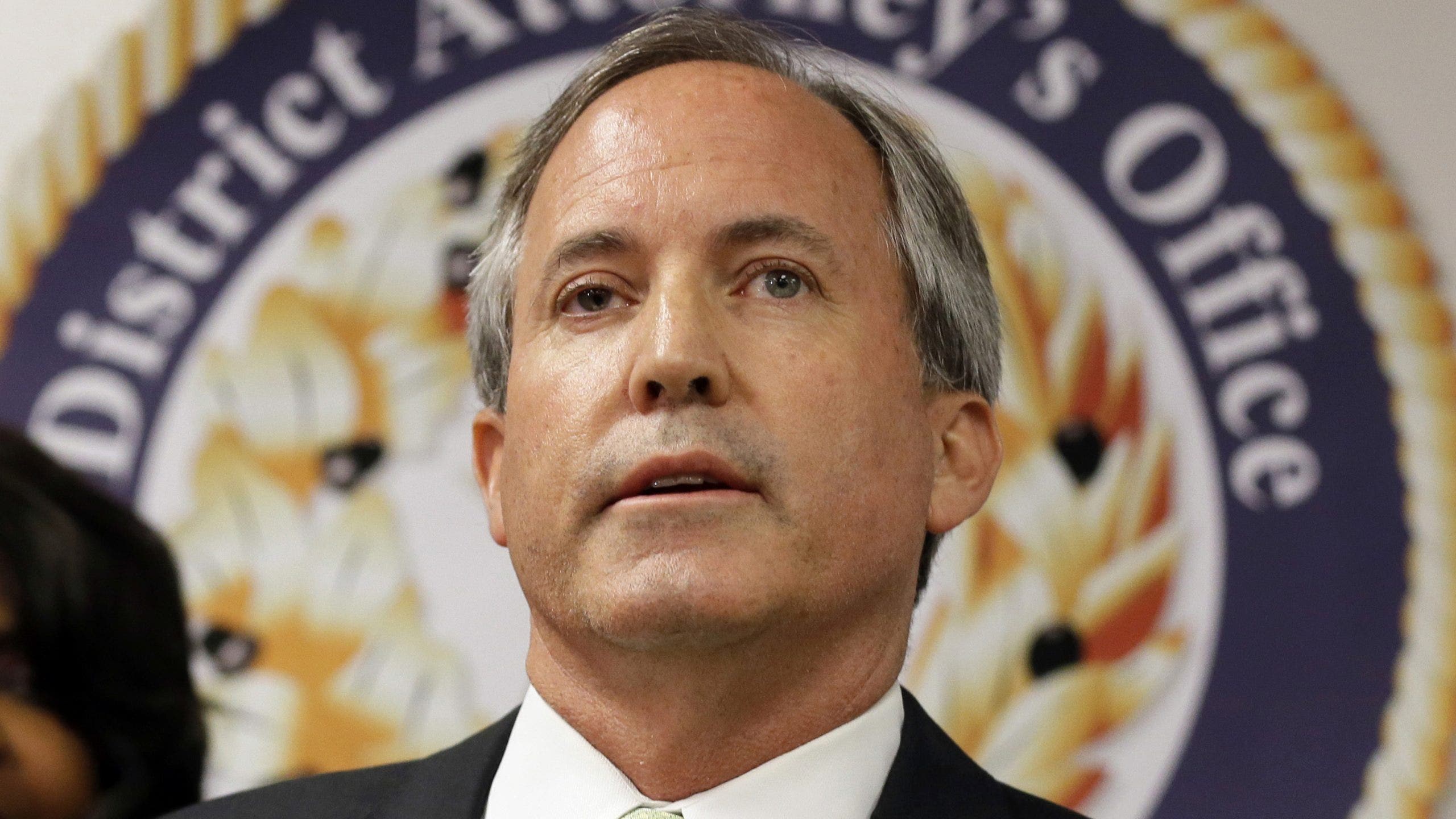In 1999, Hurricane Floyd roared through North Carolina as one of the state’s deadliest and most harmful hurricanes. It was the second major storm that month and the third in as many years to ravage the state. Chandra Taylor-Sawyer, senior attorney at the Southern Environmental Law Center, was raised in the small Black community of Kinston, but “the neighborhood I grew up in no longer exists,” she tells me. It was rendered uninhabitable by the storm.
Twenty-five years later, on September 26, Hurricane Helene struck North Carolina, breaking all of the state’s past records for death and destruction, as it carved a path of ruin across Florida, Georgia, Tennessee, South Carolina, and Virginia. Patrick Hunter, a managing attorney for the Southern Environmental Law Center, lives in Asheville, whole sections of which were wiped away along with entire towns across western North Carolina.
“It’s really hard to put into words what the devastation looks like,” he tells me of his beloved mountain community, the sound of shock thick in his voice. “It’s hard to describe the sense of loss.”
Hurricane Helene is one of the worst storms in U.S. history, causing over $250 billion in economic damage. At least 224 people have died, almost half in North Carolina, where another 26 people are still missing, likely drowned in torrential waters or buried by mud. The death toll will rise in the years to come. The average hurricane in the U.S. ultimately causes the deaths of as many 11,000 people, with the most disadvantaged prior to the storm suffering the worst consequences in its wake.
An increase in the frequency and intensity of extreme weather events is the hallmark and long-predicted outcome of the burning of fossil fuels causing a worsening climate crisis.
“Climate change is here and we’re going to experience more of these types of events if we can’t address it,” Hunter says, exasperation finally entering his voice. “When we’re not taking the steps we need to take to reduce the effects of climate change… there are very real consequences.”
Editor’s picks
For Taylor-Sawyer and Hunter, that means righting environmental injustice, protecting public health and the environment, and transforming the region away from fossil fuel — the primary cause of the climate crisis — to renewable energy. They’re working with allies across the state to significantly deepen these efforts by tapping into billions of dollars in funding from the Biden-Harris administration.
Less than two weeks before Hurricane Helene struck, I’d been visiting communities across North Carolina to see how the Biden-Harris money is contributing to their organizing, what the investments look like on the ground, and the threats and opportunities presented by the looming November election.
As a key swing state, North Carolina could single-handedly determine the outcome of the Presidential election (some polls give Trump the lead). There’s also an extremely consequential gubernatorial race pitting Republican Lt. Gov. Mark Robinson against Democratic Attorney General Josh Stein.
While Donald Trump has used Hurricane Helene as an opportunity to deny the reality of climate change and spread lies and conspiracy theories, President Joe Biden and Vice President Kamala Harris “are harnessing every agency and every authority to respond to Helene’s destruction and devastation,” White House National Climate Advisor Ali Zaidi says in a statement to Rolling Stone. “At the same time, we keep accelerating our efforts to build long-term resilience to extreme-climate disasters and attack the root cause of climate change itself.”
Historic levels of federal funding for climate action, the energy transition, and environmental justice are included throughout the over $2 trillion in the administration’s “Investing in America Agenda,” which includes the Inflation Reduction Act, Bipartisan Infrastructure Law, American Rescue Plan, and CHIPS and Science Act.
Related
With its Justice40 Initiative, the Biden-Harris administration stipulated within days of taking office that at least 40 percent of federal climate and environmental funds, across 19 federal agencies and totaling some $613 billion, must target disadvantaged environmental justice communities. These are Black, Brown, Indigenous, and other people of color and low-income communities who have been overburdened by pollution and the climate crisis, and underserved by government. An official with the Environmental Protection Agency tells me the agency has exceeded that bar, with over 60 percent of the funds serving those most in need.
It amounts to the nation’s largest-ever financial commitment to environmental and climate justice. “It’s unprecedented. I don’t think there’s any other time in history that there has been such a targeted plan to invest in disinvested communities,” Taylor-Sawyer says. “Just the EPA’s $3 billion Environmental and Climate Justice program is 80 times more than any federal investment in environmental justice in history.”

Since 2022, the EPA alone has awarded North Carolina over $1.3 billion through the Inflation Reduction Act and the Bipartisan Infrastructure Law, according to new figures provided by the agency to Rolling Stone. These and other “Investing in America” funds are credited with directing over $19 billion in federal and private clean energy investments to North Carolina, resulting in the third-highest overall net growth in clean energy jobs in the nation.
I met dozens of people across North Carolina who have received or are applying for Justice40 and related federal funds, including the heads of environmental justice networks, small rural Black community groups tackling coal companies and hog farms, the mayor of Durham, Native American activists taking on oil pipelines and methane gas plants, and Southern Environmental Law Center lawyers battling just about everyone.
The funding is supporting air and water quality monitoring, zero-emission buses, protection of tree canopies and tree planting, flood mitigation, rooftop and community solar — including local “resilience hubs,” renewable energy and energy efficiency tax credits, and community education and organizing, among other efforts. The administration is also trying to do something that the federal government has rarely achieved before: directly engaging and funding frontline communities.
But they’re in a race against time. Harris plans to continue and expand upon these policies. But the funding and the climate and equity agenda it supports are under direct assault from Donald Trump, who calls the money Washington’s “green new scam.” Project 2025, the 900-page playbook for a second Trump term published by the Heritage Foundation and authored by at least 140 people who worked in the Trump administration, would eliminate all of the funding and the legislation that backs it. Congressional Republicans have also attacked the programs, accusing the administration of “funneling billions of taxpayer dollars to radical, far-left organizations whose mission is to protest, disrupt, and undercut United States energy production and leadership, while also freeing up funds to support their extreme activist agendas.”
“There’s a huge urgency,” explains Sherri White-Williamson, director of North Carolina’s Environmental Justice Community Action Network. “If things change on November 4, we know that money is not going to be there.” And critical work that’s just getting started, “just wouldn’t get done,” she says.
Spidey Sense-r
It was raining and early in the morning when I met Chris Hawn, a co-director at the North Carolina Environmental Justice Network, in downtown Durham’s Central Park. But Hawn looked fantastic, dressed in stylish brown leather loafers, burgundy slacks, and a ‘50’s-inspired colorful geometric sweater. They directed me to a gnarly spider web, home to a funnel weaver spider (not to be confused with the more popular but far less useful, orb-weaver spider). While the latter spin Halloween style webs, the funnel weaver is all-functionality. This web had probably been there for about a year, and it was filthy. But that’s exactly why Hawn, a Ph.D. in zoology, liked it. Piled in amidst the soot, leaves, and trash, the web was also collecting polluting metals like arsenic, aluminum, and cadmium that can destroy human health.
In less than 15 minutes, and with little more than a straw, a stick, purple tape, and a phone app, Hawn taught me how to measure the pollution in the air in downtown Durham using the spider’s web. Hawn calls it “Spidey Sense-r.”
Measuring the pollution where we live is the first and most basic step to protect public health. But getting expensive air monitors into communities is stymied by the polluters who hate them, governments that don’t want to pay for them, racism, classism, and communities that can’t afford them. Spidey Sense-r, by comparison, can be made available to anyone with the skills to spot a spider’s web.

Hawn specializes in community centered participatory research, with those most impacted by harm in the lead. The North Carolina Environmental Justice Network is a grassroots, people of color-led coalition of community organizations and their supporters who work with low-income communities and people of color on issues of climate, environmental, racial, and social injustice. It has already received federal funding to participate in a larger hub of organizations working to aid local and smaller frontline groups apply for and win Justice40 money. The network has also applied for funds to support their broader educational work, including to develop a curriculum and pay for the testing of web samples to bring Spidey Sense-r to K-12 schools, community colleges, seniors, and local organizations across the state.
“It’s a once in a generation opportunity,” Hawn says of Justice40. “I see a massive potential to increase environmental justice competency and conversations, and also support the movement.”
Airkeepers
While Spidey Sense-r awaits its support, the American Rescue Plan and Inflation Reduction Act are funding a first-of-its kind community air quality monitoring network in locations across the country based on the same principles of local empowerment and advocacy.
Christian Felipe is the newly hired project coordinator at the Environmental Justice Community Action Network (EJCAN) in Clinton, a small rural city in Sampson County in Eastern North Carolina where hogs outnumber people 35 to 1. Sampson is one of the most economically distressed counties in the state. It is home to the state’s largest landfill and a multitude of industrial hog farms primarily located in low-income Black and Latinx communities. Felipe is 30-years-old and a sincere, unassuming minister in his mother’s nearby church. He was hired as part of a $500,000 grant from the EPA to oversee the area’s first community air quality monitoring project.
“We call them ‘airkeepers,’” Felipe tells me, describing the thirty or so local residents who have volunteered to place the free small air monitors outside of their homes.
“Sampson County has never had any kind of federal attention around air quality,” he adds. “We’ve had a lot of issues for many, many years, but our closest federally regulated air monitor is about an hour away.”
With Felipe’s hire, EJCAN’s staff now totals five (including two others recently hired with federal funds). The office is located just down the street and at times downwind from the Smithfield Packing Company where up to 11,000 hogs a day are slaughtered, cut, and packaged into pork products. The smell is a pungent and sickening cocktail of hog feces, urine, and flesh that regularly wafts over Clinton. But it’s more than just a bad aroma. The cumulative impact of the different polluters here releases a myriad of dangerous and toxic pollutants into the air harming public health. Until now, the only information about which, how much, where, and when pollutants are being released was provided by the companies themselves.
“Like so many other environmental justice communities, there’s very little data that’s available, and especially true for rural areas,” EJCAN’s founder and director, Sherri White-Williamson explains. Collecting that data is how “we can tell the story of what’s happening in places like this.”

Around the corner from Smithfield’s and down the street from the Southern Style Barbecue and Fried Chicken restaurant, airkeeper Alice Brunson welcomes me into her home. “I was probably one of the first ones that signed up,” Brunson tells me. “I think the air we breathe is really important… and it should be a right to have clean air so, I just jumped on the wagon and said, ‘Let’s go for it.’” She enthusiastically presents the air monitor perched on her front lawn.
Brunson and her fellow airkeepers attend regular meetings to discuss their goals for the work, learn how to use the monitors, about the pollutants they are measuring and the associated health harms, what the data means, and how it can be used.
Since 2021, the EPA increased clean air and pollution standards estimated to have saved more than 200,000 lives. The federal funding is enabling a ground-up model of self-regulation, allowing residents to directly police industry and determine how well they’re abiding by the law.
As I left EJCAN’s office, two young women who are lawyers with the Southern Environmental Law Center arrived to talk about legal proceedings against the landfill.
“It’s how we start to create action and bring about change,” White-Williamson says.
Durham’s Justice40 Benefits: Trees, Clean Buses, Flood Protection, Solar
Seated at his desk at city hall, Durham Mayor Leonardo Williams beams with excitement, ready to share his city’s success stories. He credits the Biden-Haris administration with a new approach to providing much-needed support. “For the first time, I felt like the federal government worked with us locally on the ground,” he tells me. “We [usually] have to jockey around with the state on determining what’s a priority,” with those communities most in need the last to be served, he says. “But the federal government, this administration, stepped up and said, ‘We see you. We’re going to help you.’”
In other words, the Biden-Harris administration leap-frogged the ultra-conservative North Carolina Republican General Assembly and went straight to the municipalities, allowing spending that would otherwise never have taken place here.

Durham has been awarded nearly $60 million in federal Justice40 grants. The evidence of this money is apparent walking around the city. I see trees planted to reduce heat stress in the historic Black communities of Braggtown and Merrick-Moore, among thousands of trees planted and existing canopy maintained with funds for urban and community forestry.
In downtown, the new fleet of zero-emissions buses pass by without the familiar choking cloud of black polluting smoke from fossil fueled buses, part of the Infrastructure Law’s $5 billion Clean Bus Program. Researchers at Harvard have estimated that roughly 17,000 to 20,000 people die each year in the U.S. from fossil fuel transportation air pollution, at a cost of hundreds of billions of dollars.
A day earlier, I sat in on a meeting at the Durham Armory organized by the Southern Environmental Law Center where about 100 local elected officials, non-governmental organizations, and community organizers gathered to discuss strategies, including tapping into federal funding, to make Durham and the state less focused and reliant on automobiles, ensuring accessible and equitable provision of public transit, housing, zero-emissions vehicles, and more walkable and bikeable cities, with the goal of reducing driving miles overall.
Durham also received funds to restore watersheds, part of some $472 million in EPA funding across the state to upgrade water systems, improve water quality, and reduce flooding.
“Getting the Solar in and the Fossil Fuels Out”
After meeting Mayor Williams, I am greeted by an eager group of local city officials from the Parks & Rec and related departments on Fayetteville Street at the W.D. Hill Recreation Center. W.D. Hill is on the other side of the train tracks and the freeway from downtown Durham. That’s by design, explains Summer Alston, special projects manager for the City of Durham.
Alston grew up in a small rural community about an hour outside of Durham in Warren County, the birthplace of the U.S. environmental justice movement. In 1982, residents blocked roads to halt the dumping of toxic waste just down the road from the Coley Springs Missionary Baptist Church, where much of their organizing took place.
Seated on the historic church’s pews, associate minister, Reverend Bill Kearney, tells me how the EPA had okayed the dumping based on the assumption that the Black community was “poor, politically impotent, and this was an easy thing to do.” But then, Kearney says, Black and white residents joined together, and “everyday people, many of them who were descendants of enslaved people who had been fighting and wishing for social justice, found themselves having to fight and resist because of environmental injustice. So, the two merged here” and the term “environmental justice” was born.
This legacy influences and permeates the work of those who have followed in their footsteps, Alston explains. She is not alone in expressing a healthy dose of skepticism about relying on the federal government or its money. Trained as an urban planner, Alston is now working full-time to ensure that the new federal funds service the needs of North Carolina’s most hard-hit communities.
W.D. Hill sits in the heart of the historic Black community of Hayti where residents face a host of challenges that are exacerbated by the worsening climate crisis. “There is a historic trend here of poor and Black folks getting less quality land and being in those areas that are more prone to flooding historically having infrastructure that is not up to standard,” Alston says. “Now with climate change, historical wrongs are just being amplified, generation after generation after generation.”
To address some of these risks, W.D. Hill is about to become Durham’s first “resilience hub.” The city received a $297,000 grant from the $550 million Energy Efficiency Conservation Block Grant designed to assist states, local governments, and Tribes to reduce energy use, fossil fuel emissions, and improve energy efficiency. W.D. Hill will be installing solar panels and backup battery storage which will allow it to retain power even when the centralized fossil fuel system fails.

The community already relies on the facility not only for recreation, but also as a cooling center and place of refuge during frequent bouts of extreme heat and storms. Now W.D. Hill will be energy-self-reliant. The federal funding also inspired a community-led months-long discussion about what “resilience” means for the whole district. The city applied for a $12 million Justice40 grant to support the resulting, “Hayti Reborn” initiative.
In a Hart Research poll for the North Carolina League of Conservation Voters Foundation, registered voters of all affiliations in North Carolina overwhelmingly support solar and wind over fossil fuels and want to rapidly transition off fossil fuels. They identify the urgency of the climate crisis, with Black voters expressing the greatest concern. In a Quinnipiac University poll, North Carolina Democrats place the climate crisis above abortion, health care, and crime, and rank addressing racial inequality second (after preserving democracy) on their most pressing issues facing the nation.
Central Park and Fayetteville Street flooded as a result of Hurricane Helene. To the west, Asheville was without power for weeks, and many areas are still waiting for electricity. Without electricity, water and sewage cannot flow. Across the state, over one million households went without power, including parts of Durham.
Durham, like the rest of the state, primarily depends on electricity powered by highly centralized fossil fuel energy plants that rely on coal and methane gas, followed by nuclear power. A leading cause of electricity outages in extreme weather events is downed or damaged lines and towers carrying power from centralized plants to faraway users. The shorter the distance energy travels the more resilient the system, and the less energy is used. This is why localized distributed renewable energy systems — such as solar panels on the roof — are a solution to a host of fossil-fueled problems.
City officials share a vision of bringing solar panels and community-level microgrids across Durham, building off of a grant from the American Rescue Plan. The state government has received $156 million from the Infrastructure Law’s $27 billion Greenhouse Gas Reduction Fund for a Solar For All program to fund rooftop and community solar projects in disadvantaged neighborhoods. Across the state, some 90,000 North Carolina households claimed more than $100 million in residential renewable energy credits and $60 million in energy efficiency credits under the IRA in just one year, according to Treasury Secretary Janet Yellen.

Federal subsidies will help overcome obstacles imposed by Duke Energy, the state’s monopoly power-provider. In what advocates describe as its decade-long battle against solar, among other policies, Duke has made solar more expensive to use by rejecting net-metering.
Bobby Jones, founder and President of Down East Coal Ash Environmental and Social Justice Coalition, wants a 100 percent renewable energy transition in his small city of Goldsboro. Duke’s Goldsboro power plant burned coal from 1951 to 2012, and has continued to store and utilize coal ash waste after it switched to methane gas. Jones has watched loved-ones die from cancers and other illnesses that he attributes to pollution from the plant. He’s working to not only hold Duke accountable, but also halt Duke’s plans to further expand methane gas operations.
“Solar could be such a blessing to my community in a whole lot of ways,” Jones says. “Not only would it put clean energy in our community, [but also] get them fossil fuels out.”
“It’s an all-boats-float situation,” Alston says of the Biden-Harris funding. “Making scarcity less of a thing means” there’s more money to go around to service the entire state.
“When we can deliver on funding, this once in a lifetime funding, we’re able to execute on promises that we’ve made, not promises we’ve made today, promises we made for the past 20 years,” says Neisha Reynolds, Durham’s grant writer. “Then you know that we’ll re-instill people’s faith in the system that’s supposed to be designed to serve them.”
But if the money falls through and they’re unable to deliver, people will disengage even further. “I don’t know how many more hits they will take,” Alston confides.
“We’ve Never Been Asked Before. We’ve Always Been Told.”
Crystal Cavalier-Keck is a member of the Occaneechi Band of the Saponi Nation. Her family and her Tribe have resided in North Carolina for generations. She lives in the home built by her grandfather in Mebane just North of Durham and surrounded by relatives.
She has repeatedly put her body on the line in protest to protect her land and her people, including showing up outside of the White House in 2022 to shut down roads and block traffic in opposition to the Inflation Reduction Act. Passage of the law required a side deal with Senator Joe Manchin that greenlit the Mountain Valley Pipeline project, which would pass within miles of her home and which she has led opposition to for years. “It was a deal with the devil,” she says.

Cavalier-Keck founded 7 Directions of Service to “mobilize impacted communities and our allies to protect sacred places and phase out fossil fuels.” She has continued to fight not only against the pipeline, but also the many other faults in the law which include tax breaks for the largest fossil fuel companies to conduct carbon capture and storage, support for destructive extractive projects, and other federal policies that are expanding fossil fuel production. But this has not stopped her from also working to ensure that tribal communities secure benefits.
As a part of a Justice40 hub which includes North Carolina Environmental Justice Network and Southern Environmental Law Center, 7 Directions has already helped seven tribal communities submit their own proposals for support.
Cavalier-Keck describes an entirely unique and empowering process. “Whenever somebody used to come into our community, they would say, ‘This is what’s good for you, this is what will be done.’ We’ve never been asked before. We’ve always been told.”
If Trump takes back the White House, not only will these benefits likely stop flowing, she explains, but she and her allies will instead be forced to confront a rollback of hard-fought victories. She expressed similar fears for the outcome of the state’s gubernatorial race if Mark Robinson were to win.
“Our community would really be at a loss,” Cavalier-Keck says. “Even low-income white communities too. I don’t think these Trump administration people understand what they are proposing, or they do understand, and they just don’t care that it would affect those people too.”

The Attack
Donald Trump plans to renew his “American Energy Dominance” agenda via a fossil fuel free-for-all on behalf of Big Oil. He will gut solar, wind, and federal regulations that protect our air, water, and climate. He tried to kill the Bipartisan Infrastructure Law while it was being negotiated, and said that he will repeal the Inflation Reduction Act and rescind any “unspent” funds, having asserted that he should have the power to refuse to spend any federal money he considers wasteful. He has threatened to deploy the U.S. military against the “radical left;”congressional Republicans have described many Justice40 recipient organizations, including the Southern Environmental Law Center, in remarkably similar terms.
Project 2025, the conservative policy handbook for a second Trump term, would undo what it calls the “woke” and “racist ‘equity’ agenda of the Biden administration.” Stephen Moore, co-author of those words, also co-wrote Fueling Freedom, which calls fossil fuels the “Master Resource” and details how white men and the federal government can fully unleash them.
Project 2025 would eliminate the Inflation Reduction Act and the Bipartisan Infrastructure Law and rescind all funds not already spent by these programs. If the IRA withstands the assault, Project 2025 would end direct funding for nonprofits or community organizations under the law. It would eliminate Justice40, the Office of Environmental Justice and External Civil Rights, gut the EPA, end climate action, and halt “extreme ‘green’ policies,” including subsidies for renewable energy and green energy jobs.
An analysis by Energy Innovation found that, in contrast to current policies, Project 2025 would increase annual energy costs by nearly $200 per household for North Carolinians in 2030 and more than $360 in 2035. It would also emit an excess of over 21 million metric tons of carbon dioxide in the state in 2035 — equivalent to the emissions from five coal-fired power plants.
Trending
“There’s so much on the line” with this election, says Williams, the Durham mayor. Vice President Kamala Harris’ policies are “the solutions that we’re looking for on the ground.”
The alternative, he adds, is just “impossible to imagine.”

 2 hours ago
1
2 hours ago
1
















.png)

.png)
.png)
.png)













 English (US) ·
English (US) ·  Hindi (IN) ·
Hindi (IN) ·